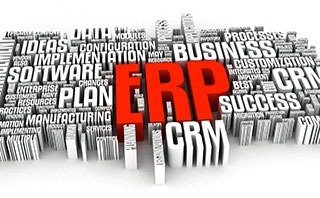In a Forbes article earlier this year, Oracle’s Jeff Erickson listed 5 strategic priorities for chief security officer in 2018. Since the CSO can no longer keep employees and IT resources safe behind firewalls, they have to create new initiatives to keep their data and IT systems secure. Prioritizing the following 5 tasks can help organizations grow and keep an open understanding of risks.
- Integrating security into development – embed security practices into the development lifecycle so developers do not treat security as optional
- Automate IT processes to protect data – security alert overload for csos
- Regulation & reporting – “almost as important as protecting the data is showing that you’re protecting the data”
- Give your CEO and board clear security metrics – create easily understandable metrics
- Protect the brand – when/if hackers strike, the hit to your brand rep could be more costly than the system outage, as we’ve seen with too many companies lately
The reality for current Chief Security Officers is the risk of a breach, from an article on Oracle.com based on “Strategic Priorities for CSO’s”. If CSO’s want to keep their company safe, they must be proactive and define appropriate technologies and processes to ensure security is embedded, says Akshay Bhargava, VP of Oracle. He explains how vital clear communication is within the business, across all levels of the organization. Not only should you (and your company) be proactive to protect your data, but you should also prepare for the worst, creating a plan of action in case a breach occurs.

In yet another intriguing blog article based off Oracle, principal analyst Alan, writes about if companies can trust cloud security in 2018. Since SO much of your cloud-based data is sensitive, you must protect it that much more. Who isn’t worried about getting hacked? Nowadays no one is safe. Which is why we can no longer rely on someone else doing it, we must protect our clouds and be proactive.
In a recent survey where 450 businesses were surveyed, 87% said they have a cloud orientation, which shows trust in the organization. 20% said the cloud is more secure than their on-premises environment, and 21% believe the cloud is less secure. 46% of respondents say between ¼ and ½ of their data is in the cloud. The more software is automated, the fewer human errors can ruin the system configurations. In the study, 84% say they are committed to increasing levels of security automation in their companies.
To conclude, the cloud shows a bright future for security in companies. As Akshay Bhargava, vice president of the cloud business group at Oracle says, “Hope for the best, plan for the worst.”

 holding you back? Why did you stay so long? This year, make it a goal to follow your PASSION. I know the interview process is overwhelming sometimes, but won’t the end result be worth it? I love my job, and at this point in my career, I know it is exactly where I’m meant to be. But I wouldn’t have gotten here if I didn’t have my counselors help, the support of my parents, and doing A LOT of research on what kind of career I wanted to have and what goals I wanted to accomplish. These articles from Business Insider should help you create your New Years resolutions:
holding you back? Why did you stay so long? This year, make it a goal to follow your PASSION. I know the interview process is overwhelming sometimes, but won’t the end result be worth it? I love my job, and at this point in my career, I know it is exactly where I’m meant to be. But I wouldn’t have gotten here if I didn’t have my counselors help, the support of my parents, and doing A LOT of research on what kind of career I wanted to have and what goals I wanted to accomplish. These articles from Business Insider should help you create your New Years resolutions:


